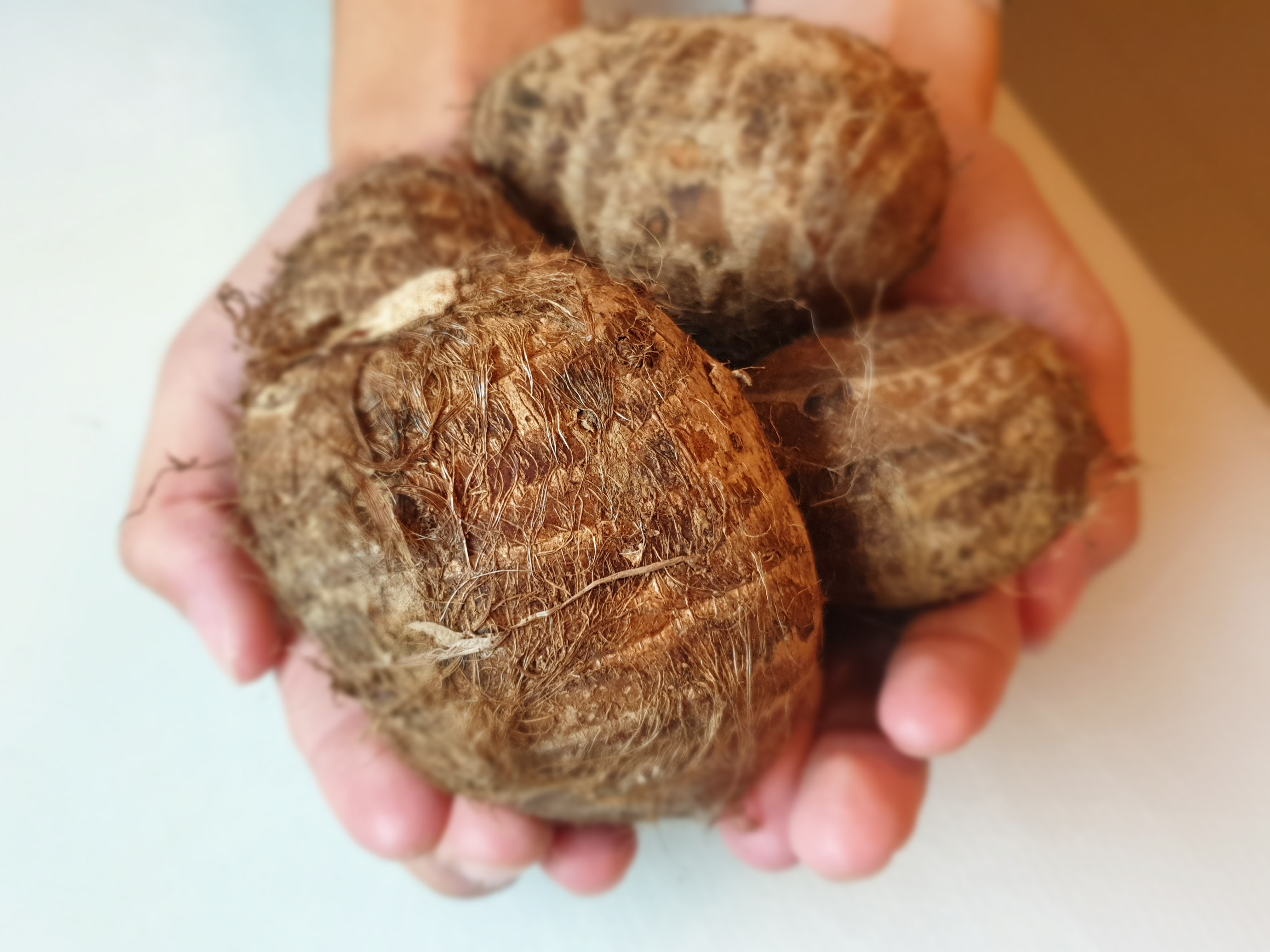
Yam (Colocasia Esculenta)
Plant:
Known as Yam (not to be confused with sweet potato), it is scientifically cataloged by Colocasia Esculenta and belongs to the Araceae family. The yam plant has large, heart-shaped, fleshy and tender leaves that are appreciated in many cuisines – the raw leaves contain a lot of oxalic acids, which can cause severe allergies, so they must be cooked to release it. much of that energy – but the most sought after is its tuber, the yam. This rhizome is cylindrical, woody, with ridged bark and brownish in color, and can be found in three varieties: white, purple, or red.
Yam production is now spread all over the planet, although its production is more intense in countries in the tropics and subtropics with high humidity.
Properties:
Anti-inflammatory, antioxidant, anti-anemic, diuretic…
The leaves are rich in vitamins and minerals (iron, zinc, phosphorus, vitamin B6, vitamin C, potassium, copper, magnesium, among others), while the tuber is very rich in starch, between 30% and 33% of its weight dry, but low in protein (up to 2% of dry weight), fat and contains minerals (especially iron and magnesium) and vitamins, such as vitamin C and B complex.
Application:
- anemia,
- appendicitis,
- arthritis,
- hair and skin,
- cardiovascular imbalances,
- eczema,
- patch to remove bruised blood from bruises and abscesses,
- hemorrhoids,
- intestines,
- cleanses the blood,
- improves female fertility,
- constipation,
- protects against degenerative diseases,
- obesity,
- reduces menstrual pain and symptoms of menopause,
- kidneys,
- syphilis,
- sinusitis,
- immune system,
- slows down toxins…
How to consume:
The leaves of the yam plant – except those with clear or reddish stems should be avoided as they have an excess of oxalic acid – can be used to make soups, stews, or even in baking. The yam, the tuber, can substitute for congeners such as potatoes, being used in many cultures to make soups, juices, mash or serve as a base in many desserts.
The most common way to consume yam is boiled in water, fried, or roasted.
Contraindication:
Pregnant and lactating women and children up to six years old. People with gout, kidney stones should also avoid eating the yam plant or its tuber due to the presence of oxalic acid – the leaves even need to be cooked to release much of the yam plant. oxalic acid. In addition, every body is different, and therefore it is important to be aware of any allergies.
This text is an awareness. Depending on the season and the moment in which you are, it’s up to everyone to decide whether to eat this food. The dosage and frequency depend on the nature and physical condition of each Human Being.
Know more about plants on:
Physalis leaves purify the blood and strengthen immunity




